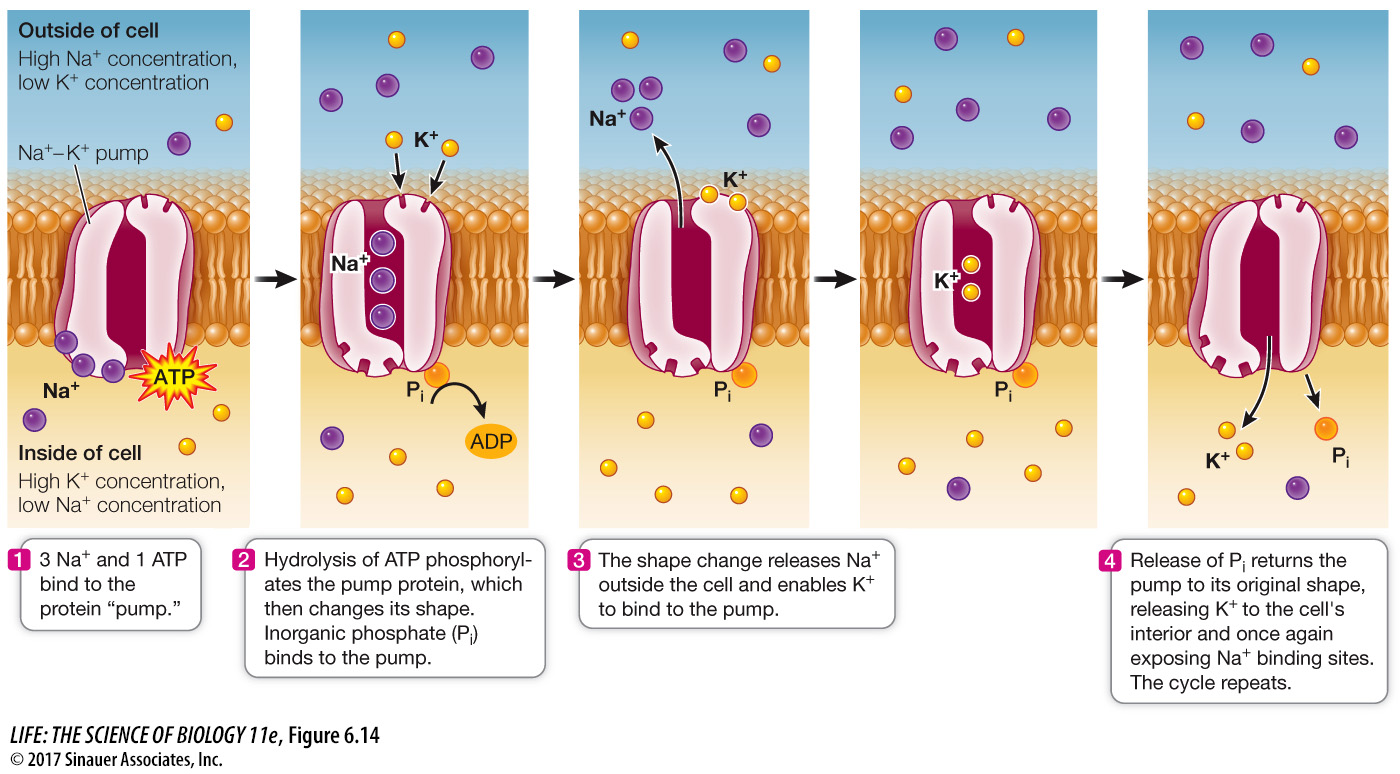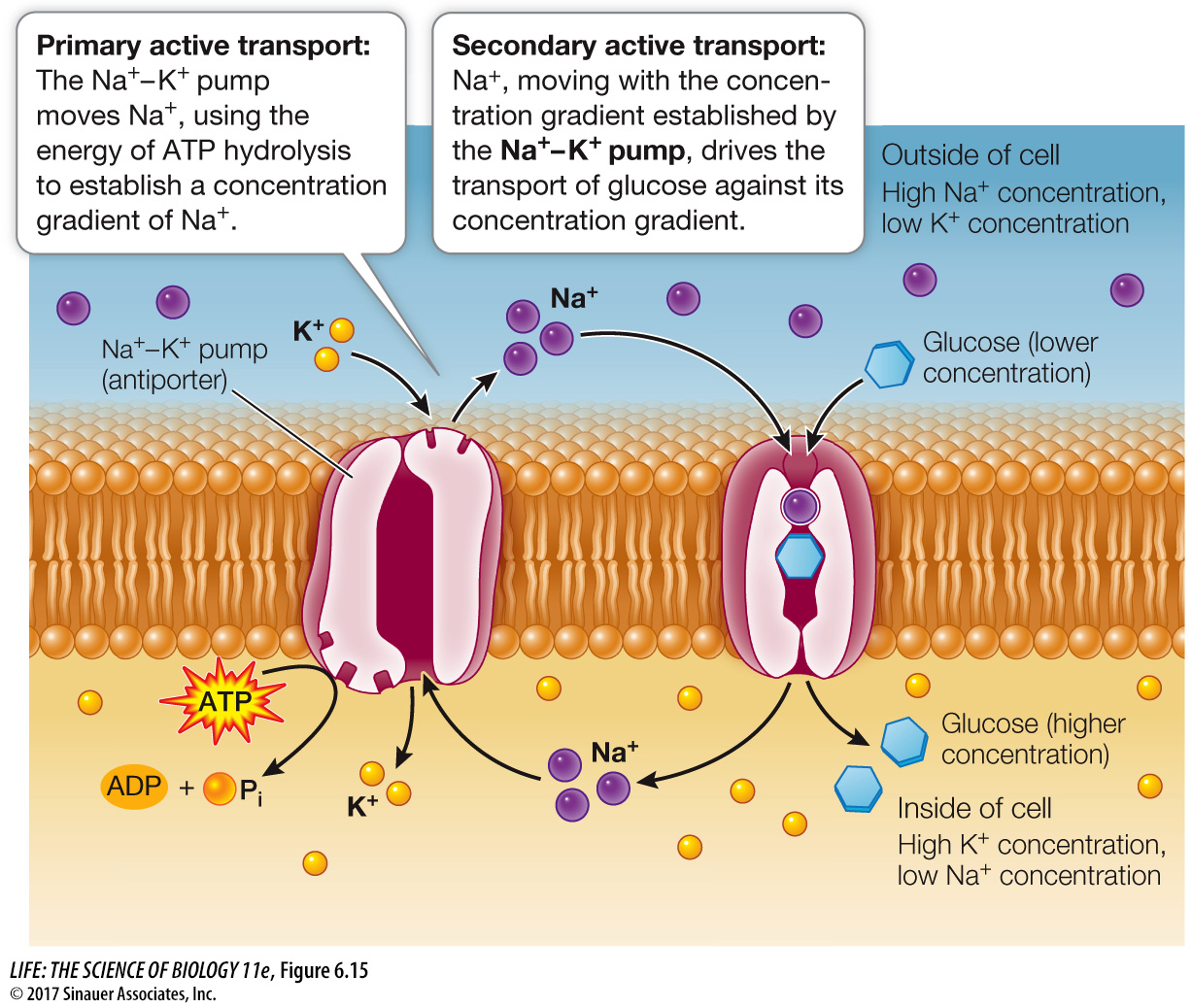Different energy sources distinguish different active transport systems
There are two basic types of active transport:
Primary active transport involves the direct hydrolysis of ATP, which provides the energy required for transport.
Secondary active transport does not use ATP directly. Instead, its energy is supplied by an ion concentration gradient established by primary (ATP-
driven) active transport.
In primary active transport, energy released by the hydrolysis of ATP drives the movement of specific ions against their concentration gradients. For example, we mentioned earlier that concentrations of potassium ions (K+) inside a cell are often much higher than in the fluid bathing the cell. However, the concentration of sodium ions (Na+) is often much higher outside the cell. A protein in the cell membrane pumps Na+ out of the cell and K+ into the cell against these concentration gradients, ensuring that the gradients are maintained (Figure 6.14). This sodium–

An important drug used to treat a weak heart inhibits the Na+–K+ pump. Digitalis, purified from the foxglove plant, blocks the release of phosphate ions (Pi) from the protein (see Figure 6.14, step 4). This “freezes” the shape of the pump, and it can no longer bind Na+. So Na+ accumulates inside heart cells. This ultimately leads to a greater force of contraction of heart muscle, which aids a patient whose heart is not pumping well.
In secondary active transport, the movement of a substance against its concentration gradient is accomplished using energy “regained” by letting ions move across the membrane with their concentration gradients. Think of it this way: A large dam may prevent a river from flowing. The accumulated water represents energy, and when the water is allowed to flow past the dam, the energy it releases can be used to drive turbines that make electricity. It’s similar for secondary active transport. Consider, for example, the absorption of glucose into the bloodstream from the digestive tract. Once the Na+–K+ pump establishes a concentration gradient of sodium ions, the passive diffusion of some Na+ back into the cell can provide energy for the secondary active transport of glucose into the cell (Figure 6.15). Secondary active transport aids in the uptake of amino acids and sugars, which are essential raw materials for cell maintenance and growth. Both types of coupled transport proteins—

Q: If the Na+–K+ pump is blocked by a drug, how will intercellular concentrations of Na+ and glucose be affected?
Blocking the Na+–K+ pump will result in equal concentrations of Na+ inside and outside the cell. Generally, this will increase the cellular Na+. The absence of a Na+ gradient will mean there is no potential energy to drive glucose uptake into the cell, so the glucose concentration will be reduced.